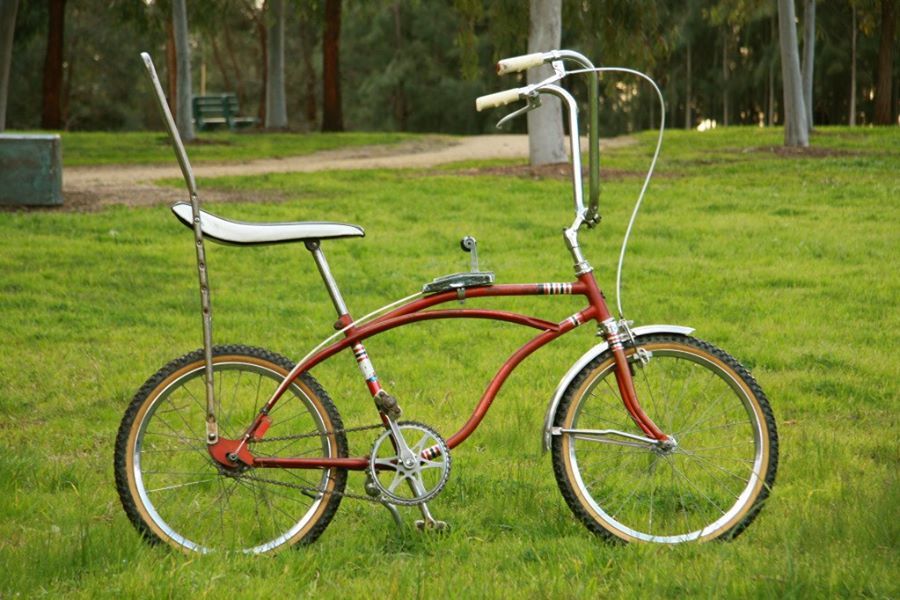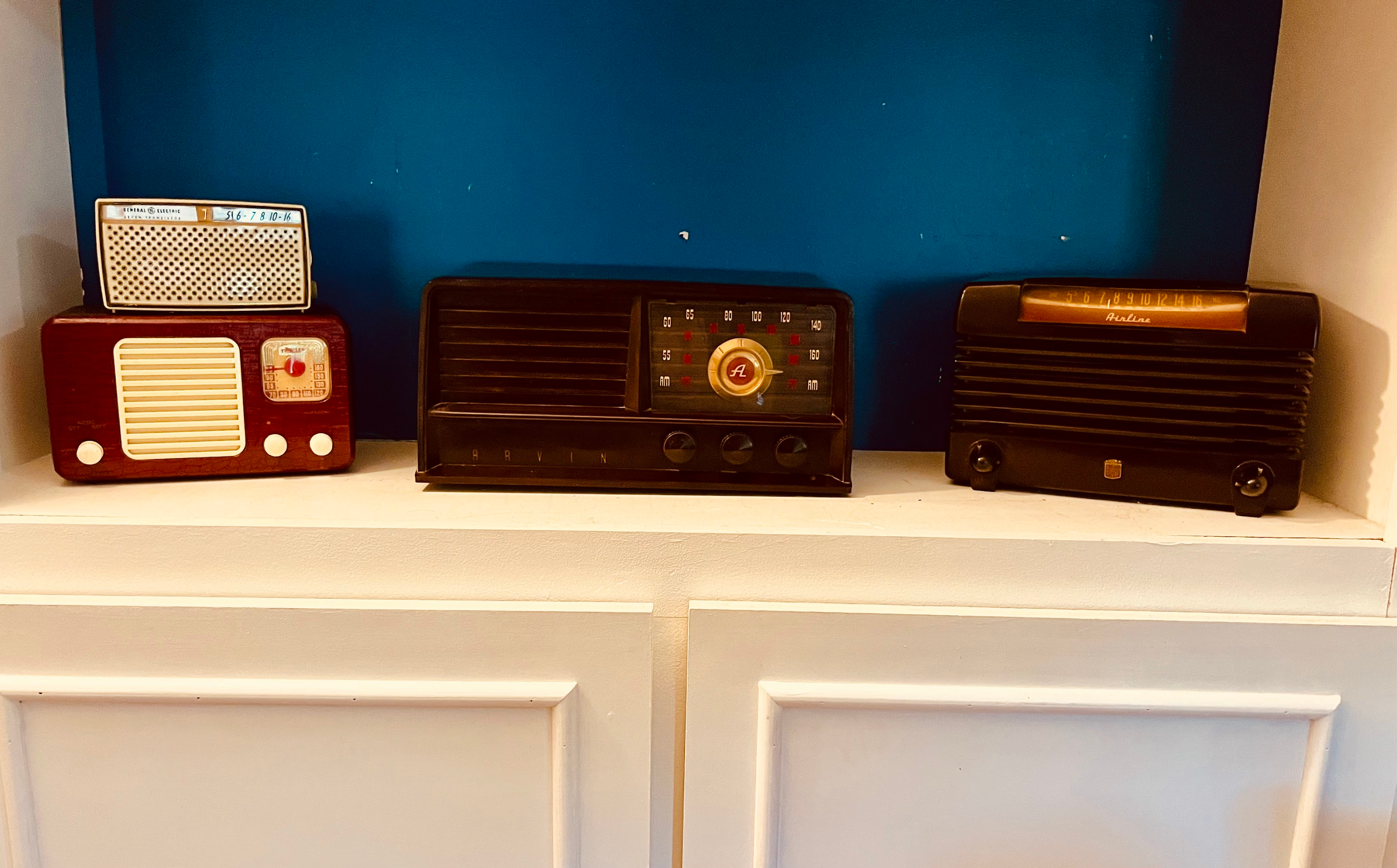I don’t mean BETTER. That’s a different conversation. I mean cooler.
An old CRT display was literally a small scale particle accelerator, firing angry electron beams at light speed towards the viewers, bent by an electromagnet that alternates at an ultra high frequency, stopped by a rounded rectangle of glowing phosphors.
If a CRT goes bad it can actually make people sick.
That’s just. Conceptually a lot COOLER than a modern LED panel, which really is just a bajillion very tiny lightbulbs.
Bicycle shifters.
The first iteration that could be operated without stopping was the Campagnolo Cambio Corsa.
To shift, you had to reach behind you, where there were 2 levers.The first one loosened the rear axle so it could move freely back and forth in the dropouts.
The second one had an eyelet you could use to move the chain sideways.
You put the chain on a different cog, and the rear wheel jumped forward or back due to the changed chain tension.
Then you tightened the rear axle again.
Hi there

To make sure I understand, you reached back and grabbed those levers while pedaling and riding the bike?
How many people lost fingers by sticking them into the spokes, I wonder?
Yes.
Honestly those are terrifying. I can’t imagine doing any of that whilst on the move.
This sounds like a gadget specifically designed to make people fall off their bikes and break their bones.
… Cool.
The fuck!
Aah… Boomer bait, we get that a lot :s
The internet
Any mechanical regulation process that used to be handled by actual machine parts. Think of the centrifugal governor, this beautiful and elegant mechanical device just for regulating the speed of a steam engine. Sure, a computer chip could do it a lot better today, and we’re not even building steam engines quite like those anymore. But still, mechanically controlled things are just genuinely a lot cooler.
Or hell, even for computing, take a look at the elaborate mechanical computers that were used to calculate firing solutions on old battleships. Again, silicon computers perform objectively better in nearly every way, but there’s something objectively cool about solving an set of equations on an elaborate arrangement of clockwork.
Centrifugal governors are possibly one of the origins of the phrase “balls out” or “balls to the wall” (although many say “balls to the wall” has to do with the ball-shaped handles on old aircraft throttle levers)
Also somewhat similar to governors are centrifugal switches, which are used in just about anything with an electric motor to disconnect the motor from a capacitor which gives the motor a little extra juice to get it going (I like this video for an explanation of how they work)
I didn’t know that was a thing. Thanks! I’m honestly surprised some MBA bean counter hasn’t replaced those with a chip of some sort by now. Really cool!
Someone showed me a record turntable with what must have been a centrifugal governor! What an ingenious device. (I got the impression from him this was unusual for a turntable, at least…)
I was under the impression that all wind-up turntables (I.e.: from the shellac records and steel needles and mechanical reproducers era) were using mechanical governors
Maybe I’m wrong though.
Oh I know little to nothing about turntables, so you’re probably right :-)
H model C-130s, the ones with the 4 square blade props? The engines and props are mechanically governed. There are electronic corrections applied, but the core of the systems are purely mechanical. Still flying.
Source: former flight engineer on them.
To add, there is something about those old 40s and 50s era technical films like you linked that is just so… I don’t what exactly it is, but I find them fascinating and genuinely informative, even though they are explaining tech that is decades obsolete.
It’s pretty awesome that they are still available 70+ years later in excellent quality!
The idea of punch card programming blows my mind.
He’s not talking about punch card programming, that’s way more advanced and requires a Turing machine, what he’s talking about is computers as the term was using before what you would think as a computer existed.
The example in the video is for the computer on a cannon in a battleship. If there wasn’t a computer you would need to adjust the angle and height of the cannon, but that’s not something a human can know, what humans can know is angle to the ship and the distance to it, so instead you put two inputs where a human inputs that and you translate that into angle/height. Now those two would be very straightforward, essentially you just rename the height crank to distance. But this computer is a lot more complex, because wind, speed, etc can affect the shoot, so you have cranks for all of that, and internally they combine into a final output of angle/height to the cannon.
That’s cool, but punch card programming blows my mind.
Interchangeable automotive/bicycle parts.
Or for that matter, interchangeable anything parts.
Both cooler and better at the same time. Interchangeable parts made it easier to both customize and repair your own stuff…
I love that Replaceable Parts is a technology you can research in Civilization. The first time I saw it I thought it was kinda stupid until I thought “Oh wait, does that mean that there was a time when replacement parts just wasn’t a thing?”
Used to be where Mongoose, Huffy, Schwinn, etc bearings and stuff were interchangeable. Used to be where NVidia GPUs could run in an AMD motherboard. I happen to own older things on both ends of that compatible spectrum.
Used to be where an Idle Air Control Valve from a Chevy would fit an Isuzu…
Being able to build something with off the shelf parts is an art.
Used to be where NVidia GPUs could run in an AMD motherboard. I happen to own older things on both ends of that compatible spectrum.
I don’t know what you mean by that. The protocol for communication of computer parts is open source. Desktop computers are a great example of interchangeable parts. An Nvidia GPU that can’t run in an AMD motherboard is either not from the same era (so an equivalent AMD GPU wouldn’t work either) or a different form factor (e.g. trying to plug a laptop GPU on a Desktop)
The protocol of communication of computer parts is open source? Since when?
What the fuck is USB? And why is that proprietary?
Regardless, AMD vs nVidia might work together, but not optimally these days.
The protocol of communication of computer parts is open source? Since when?
Since forever, which protocol do you think it’s not? For a few examples here’s PCI and DDR5
What the fuck is USB? And why is that proprietary?
USB is a standardized connector, with again an open source protocol. Here’s the specification in case you’re interested https://www.usb.org/document-library/usb-20-specification
Regardless, AMD vs nVidia might work together, but not optimally these days.
I would need a source for that, I’ve had AMD +Nvidia up until very recently and it worked as expected.
USB is absolutely not a standardized connector, otherwise it would only be one type of connector, not the dozen or so they’ve made over the decades. There’s nothing universal about it.
And if it was open source, then why doesn’t VirtualBox release the source code for their USB extension package?
USB is absolutely not a standardized connector,
USB is absolutely standardized, I even sent you the 2.0 spec, you can get the spec for the other versions on the same website.
otherwise it would only be one type of connector, not the dozen or so they’ve made over the decades.
Different versions/connectors have different specs, all of them open, otherwise different manufacturers wouldn’t be able to create devices that use it.
There’s nothing universal about it.
That’s ridiculous, first of all the name relates to the fact that it can be used for any data transfer as long as it’s serial. Secondly the sheer amount of different devices from different manufacturers that can be plugged via USB should give you a hint of just how universal and open the standard is.
And if it was open source, then why doesn’t VirtualBox release the source code for their USB extension package?
The standard is open, implementations of it are not, it’s like OpenGL or Vulkan.
Regardless, AMD vs nVidia might work together, but not optimally these days.
And yet most of the time in the past 2 year the best choice for a gaming PC would be a 3D cache Ryzen with an Nvidia GPU. Is there something particular you have in mind that supposedly doesn’t work with an AMD chipset and an Nvidia GPU?
PCI-Express is not an open standard but both AMD and Nvidia are members and it’s what both use for their GPUs and AMD for it’s chipsets (as well as Intel). It’s certainly not a secret cabal.
It’s all in the same family, literally…
https://www.cnn.com/2023/11/05/tech/nvidia-amd-ceos-taiwan-intl-hnk/index.html
This supports your claim of AMD vs Nvidia not working optimally together how?
Used to be where NVidia GPUs could run in an AMD motherboard.
They still can.
Oof, wait. I mean when AMD processors were actually compatible with nVidia motherboards.
A8N-SLI Deluxe
But that’s not a thing for intel CPUs either, at least not anymore.
I’m not sure why, but Nvidia hasn’t been making chipsets/motherboard sfor quite a while. Or was there a point in time when it only made chipsets for intel CPUs?
Probably not as well as used to be though.
No, they work fine.
The concept of having interchangeable, standardized parts is actually kind of a new idea from the Industrial Revolution. Before then, everything was custom-made to fit. The example that comes to mind is firearms. All of the muskets and rifles used in the revolutionary war, for example, were hand-made and hand-fitted. The lock from one rifle wouldn’t necessarily fit on another. If your stock broke, you couldn’t just go get a new stock and slap it on - you had to bust out the woodworking tools and make a new one.
Railway signalling and interlocking systems. Sure ETCS and other digital systems are far safer, but some dude at a junction used to manually reset the points and crossovers using a giant lever. Now everything’s just a digital system overseen by someone with 8+ monitors in a control room removed from the actual network.
Also, not a technology, but rally cars used to be fully unhinged. I could watch old Group B videos for hours and never get bored.
Come to Germany, we still use parts from emperors time😂
The internet when it wasn’t overtaken by a few major corporations.
I’m biased because I’m building up a small collection, but radios were cooler when they were made of Bakelite.
My modest collection:

Also, I realize that digital tuning is more accurate, but there’s something I find very pleasant about turning a knob and the station suddenly comes in clearly. Just that little “aha” serotonin hit.
Home stereo systems. As a kid I remained enthralled by the metal face and the heavily tactile buttons and switches and knobs. You felt a delicious variety of feedbacks for every action you took. I honestly think we really lost something special when tactility left technology. It was so satisfying to just use.
I used to be pretty into machine learning and AI generation circa 2018-ish. It used to be fun and surreal. Sites like artbreeder were a great novelty, and also a pretty good learning tool. Now that it’s “good” I feel that not only has a lot of the charm been lost, it’s become much easier for malicious actors to use it.
I could mention toasters or pinball machines or flickering light bulbs or unusual people movers, but instead I’ll save some time and just link the whole obligatory channel: https://www.youtube.com/@TechnologyConnections
Technology connections is the gent that inspired this thread. Was watching one of his videos about old camera flashes (LITERALLY TINY FLASHBANG GRENADES. WE USED TO USE FUCKING BOMBS TO TAKE PHOTOS IN THE DARK HOW FUCKING COOL IS THAT???) and figured “huh… There are a lot of old inventions that might suck to use but are conceptually really cool, aren’t there?”
Fun fact, he’s in the fediverse! He’s @[email protected] over on mastodon.
Cars used to be cool. Every car company had some kind of sporty car, a couple cheap cars, a big luxury sedan and, a while ago, a station wagon.
Now every car is an SUV or CUV. Sedans are getting phased out. Cool sports cars don’t make money so they don’t make them. People don’t buy station wagons so they don’t make them. And they’re pushing big, angry trucks on everyone.
The internet?
Web 1.0 and even before was way cooler than this corpo bullshit web we have now.
Slide open phones with a QWERTY keyboard. Those were the bomb.
I wish someone would being those back
I was thinking the other day how much cooler flap displays at stations and airports were compared to modern displays.
Such a nice interface between computer control and a purely mechanical display. Watching them update, flipping through all the variables to land on the right one, and then clearing was so cool.
I miss the noise they made too. Haven’t seen one for like 20 years now.










